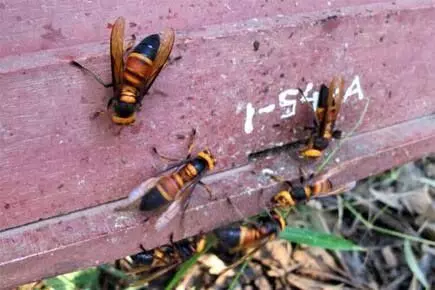
Wonder how honeybees protect themselves from vicious hornets? Know how
text_fieldsSure, we know that bees pollinate our crops and give us honey. But there are so many more fascinating facts about these buzzing insects than that.
Interestingly, a report by Indian Express states how these buzzing insects can control the temperature in astounding ways — from keeping the hive cool during heat waves to cooking their enemies alive.
In a battle with vicious hornets, the honeybees turn up the heat—quite literally—by swarming around the hornets and cooking them to death.
The bees' strange defensive tactic evolved because their venomous stingers are too small to pierce the thick exoskeletons of the giant hornets—insects which can grow about two inches (five centimeters) long. The quivering of muscle fibers from so many bees creates real heat that kills off the predators.
As the hornet hones in, a defensive army swarms the attacker. Hundreds of bees buzz so furiously, that the temperature at the heart of their dense mass rises to 46 degrees Celsius (about 115 degrees Fahrenheit). When the swarm dissipates, it leaves behind a dead hornet — cooked alive by its would-be prey.
Now scientists have found a genetic switch in the honeybees' brains that turns on during the attacks. Though the gene activity doesn't seem to trigger the behavior, it might provide leads in explaining the insects' ability to withstand the heat of so called hot defensive bee balls, a new study says.
This "hot defensive bee ball" is a high-stakes tactic where a few soldier bees usually lose their lives along with the hornet — and not common to all species of bee. But its principles of working together for the good of the colony, and skillfully controlling temperature, are echoed in beehives around the world.
Unlike mammals, insects can't regulate their own body temperature. But working together, the beehive acts like a "superorganism" with a steady internal warmth.
And during heat waves, bees also proactively work to keep the colony cool — gathering water, which they distribute in droplets throughout the hive, and fanning air through its chambers with their wings.
The climate crisis is taking its toll on bees, and causing some populations to fall out of sync with the flowering plants they depend on for food. But researchers are looking into whether their impressive thermoregulation abilities might help bees survive in a warming world.























